每秒旋转数圈,花滑运动员们为什么转不晕? Why Don’t Figure Skaters Get Dizzy When They Spin?
中国日报网 2022-02-08 16:40

在2月8日结束的北京冬奥会花样滑冰男子单人短节目的比赛中,美国选手陈巍以113.97分排名第一,日本选手键山优真和宇野昌磨分别排在第二和第三位。
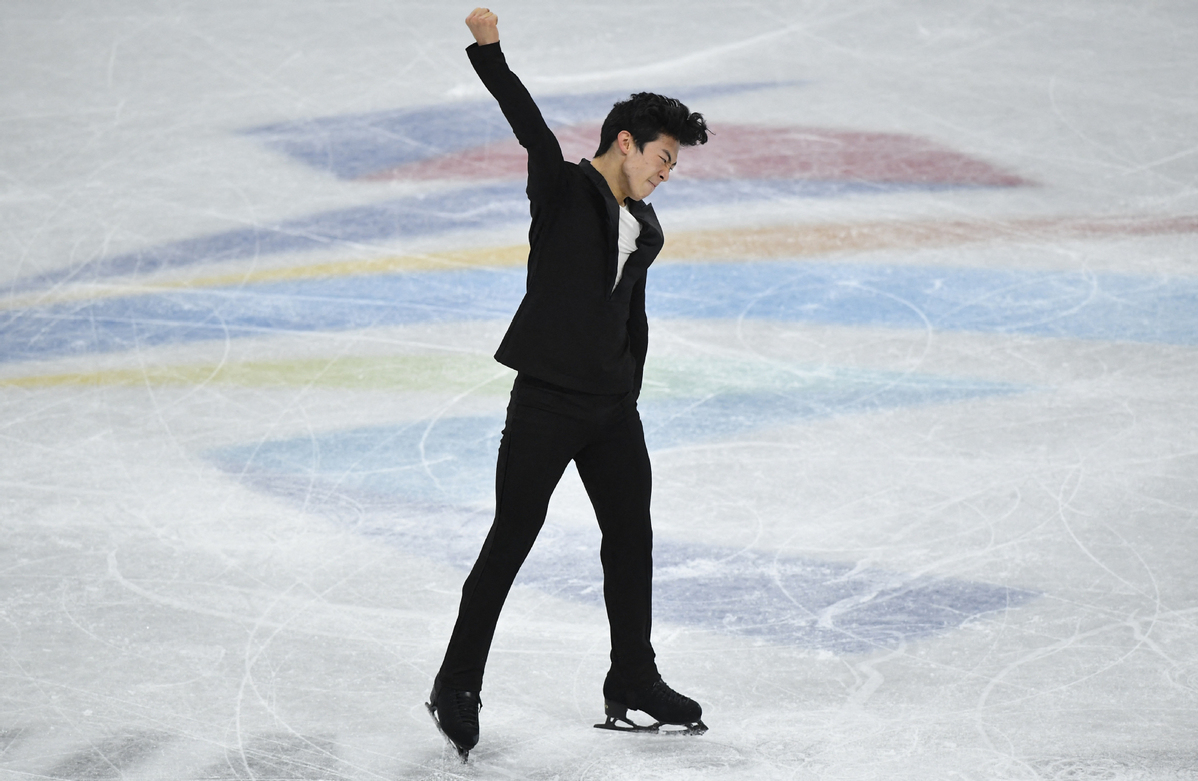
中国选手金博洋第五个出场,他以90.98分的成绩排名第11位,同样成功晋级;备受关注的日本选手、卫冕冠军羽生结弦拿到95.15分,以第八名的成绩进入自由滑比赛。根据赛程安排,男单自由滑的比赛将于2月10日9时30分进行,届时将诞生本届冬奥会花样滑冰个人项目首金。
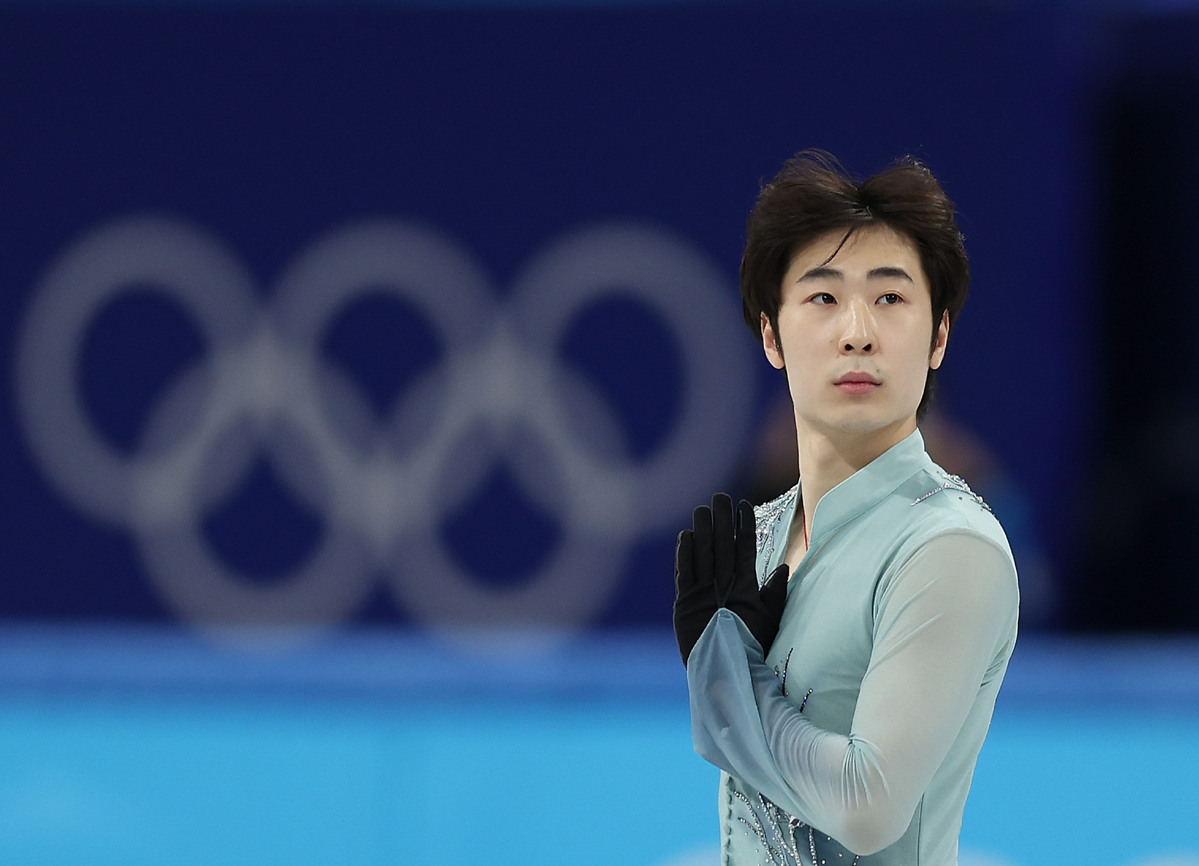
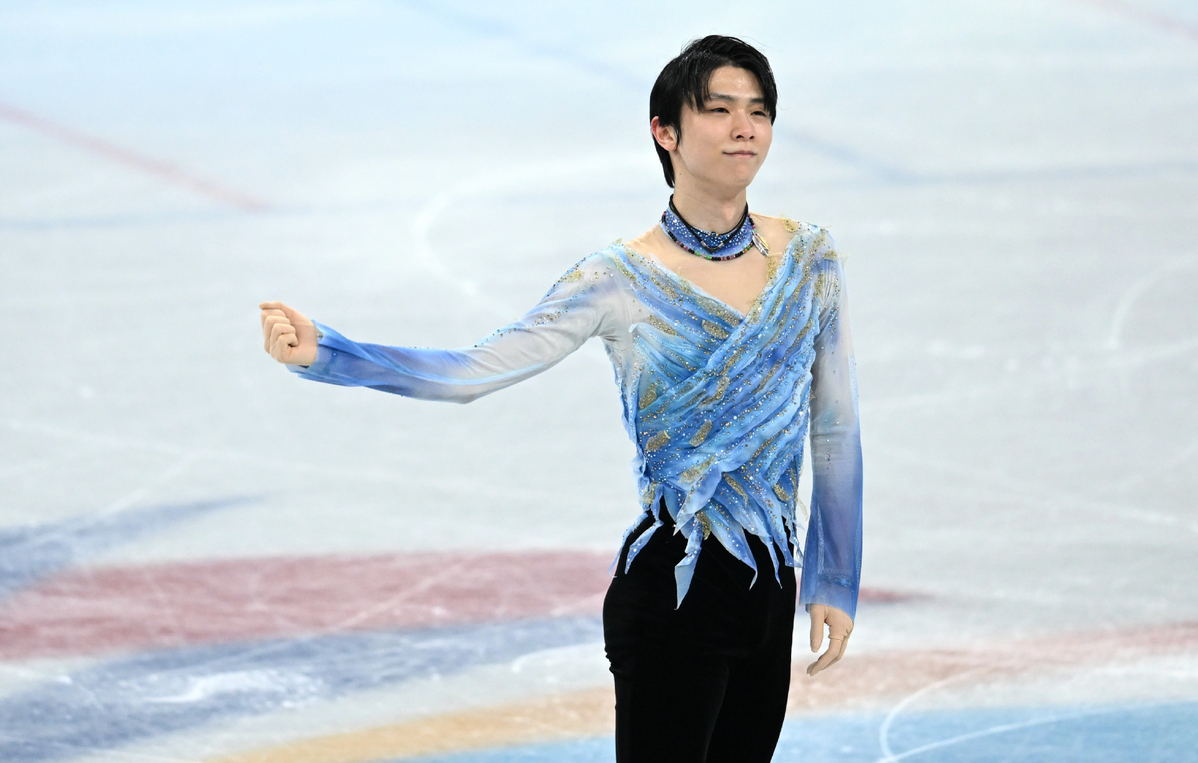
【花滑小课堂】
2022年北京冬奥会花样滑冰赛事包括5个竞赛项目:男子单人滑(Men's Singles),女子单人滑(Women's Singles),双人滑(Pairs),冰舞(Ice Dance),团体赛(Team Event)。
Each event typically consists of a short and long routine that helps determine a competitor's score. The short routine (also known as the short program) acts as a qualifier - only the top-scoring skaters from this portion of the competition advance to the long program (also known as the free skate or free program). Skaters then receive a combined score from the short and free programs to find the overall winner.
每个项目通常由短节目和自由滑组成,根据两个节目的总分排名。短节目可以看成是预赛——只有短节目排名靠前的选手才有资格晋级自由滑的比拼。最终通过短节目和自由滑的总分决定名次。
Within each routine, a skater receives two sets of scores: the technical element score (TES) and the program component score (PCS). The PCS is based primarily on presentation, while the TES evaluates the difficulty and completion of the routine (things like spins and jumps).
每场比赛中,运动员都将得到两组分数:技术分(TES)和艺术分(PCS)。艺术分主要基于选手的表演;而技术分是评估难度和节目完成度(如旋转和跳跃)。
花样滑冰是冬奥会上最具艺术观赏性的冰上项目之一。运动员们在冰面上翩翩起舞,一个个高难度的旋转、跳跃动作惊艳观众。
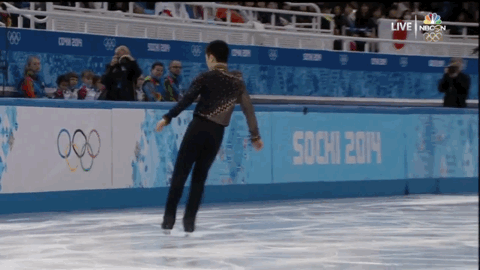
直立旋转、燕式旋转、躬身旋转……赛场上的花滑运动员,不断重复着旋转、跳跃动作。无论动作多复杂,总能在完成高难度旋转后,保持优美滑行。花滑运动员们为什么转不晕?

How do figure skaters who spin at incredible speeds, avoid losing their balance?
高速旋转的花样滑冰运动员是如何避免失去平衡?
The short answer is training, but to really grasp why figure skaters can twirl without getting dizzy requires an understanding of the vestibular system, the apparatus in our inner ear that helps to keep us upright. This system contains special sensory nerve cells that can detect the speed and direction at which our head moves. These sensors are tightly coupled with our eye movements and with our perception of our body's position and motion through space. For instance, if we rotate our head to the right while our eyes remain focused on an object straight ahead, our eyes naturally move to the left at the same speed. This involuntary response allows us to stay focused on a stationary object.
简单来说,靠训练。但要真正弄懂花样滑冰运动员为什么不会转晕,我们需要先了解前庭系统,即内耳中帮助人体保持直立的器官。前庭系统包含特殊的感觉神经细胞,可以检测头部运动的速度和方向。这些神经传感器与眼球运动,以及人们对自身在空间中的位置和运动的感知紧密相连。例如,如果我们把头向右转,而眼睛依然聚焦在前方的物体上,眼睛自然会以相同的速度向左移动。这种下意识的反应使我们能够盯住静止的物体。
Spinning is more complicated. When we move our head during a spin, our eyes start to move in the opposite direction but reach their limit before our head completes a full 360-degree turn. So our eyes flick back to a new starting position midspin, and the motion repeats as we rotate. When our head rotation triggers this automatic, repetitive eye movement, called nystagmus, we get dizzy.
转圈则更复杂。当我们在旋转过程中移动头部时,眼睛开始向相反的方向移动,但头部在转动360度之前,眼睛就转到极限了。因此,眼睛在旋转过程中会转到一个新的起始位置,而这个动作在旋转的过程中不断重复。当头部旋转触发了这种自动的、重复的眼球运动(称为眼球震颤),我们就会感到头晕。
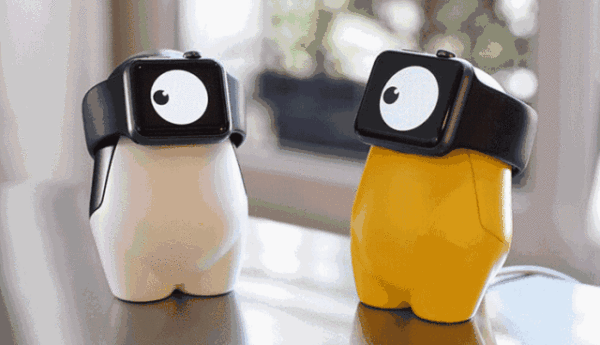
Skaters suppress the dizziness by learning how to counteract nystagmus with another type of eye movement, called optokinetic nystagmus. Optokinetic nystagmus occurs in the opposite direction of the nystagmus and allows us to track a moving object—such as a train whizzing by—with our eyes while our head remains in place. As the first few cars of the train move out of view, our eyes jump back to their initial position to follow the next few, and the motion repeats. Skaters can train themselves to engage this opposing eye movement when they rotate to offset the nystagmus and keep the world from spinning.
滑冰者通过学习用另一种类型的眼球运动来对抗眼球震颤,从而抑制眩晕,这种眼球运动被称为视动性眼震。视动性眼震与眼球震颤的方向相反,使我们能够在头部保持不变的情况下,用眼睛追踪移动的物体,如呼啸而过的火车。当火车的前几节车厢离开视线时,我们的眼睛会跳回到最初的位置,跟随接下来的几节车厢,重复眼球运动。滑冰者可以训练自己在旋转时进行这种相反的眼球运动,以抵消眼球震颤,防止头晕。
Professional athletes employ a variety of other strategies to prevent dizziness, including maintaining a uniform speed. The sensors in our vestibular system can detect only changes in speed, so they fail to sense rotation that takes place at a steady pace. If athletes can manage their speed, they encounter dizziness only while they accelerate into and slow down out of a spin.
专业的运动员会采用保持匀速等各种不同策略来防止眩晕。前庭系统中的神经传感器只能检测速度的变化,因此它们无法感知以稳定速度发生的旋转。如果运动员能够控制自己的速度,他们只有在加速旋转和减速旋转时才会感到头晕。
花滑运动员为了克服身体机能的不适,会针对前庭系统进行大量练习,在科学规范的训练基础上让身体处于习惯旋转的状态,更轻松地驾驭旋转的眩晕感。
花样滑冰旋转动作
了解了花滑运动员成为“冰上陀螺”的秘诀,最后,再来认识一下花样滑冰中令人眼花缭乱的旋转动作吧!掌握这些花滑知识,观赛不“头晕”。
花样滑冰旋转动作主要有三种基本姿势:蹲踞(Sit spin)、燕式(Camel spin)、直立(Upstraight spin):
As the name suggests, a sit spin is when the skater must sink towards the ice in a sitting position. They must hold one leg out parallel to the ice while rotating on their supporting leg.
顾名思义,蹲踞旋转是指滑冰者必须以坐姿向冰面下沉。他们必须保持一条腿与冰平行,同时用支撑腿旋转。
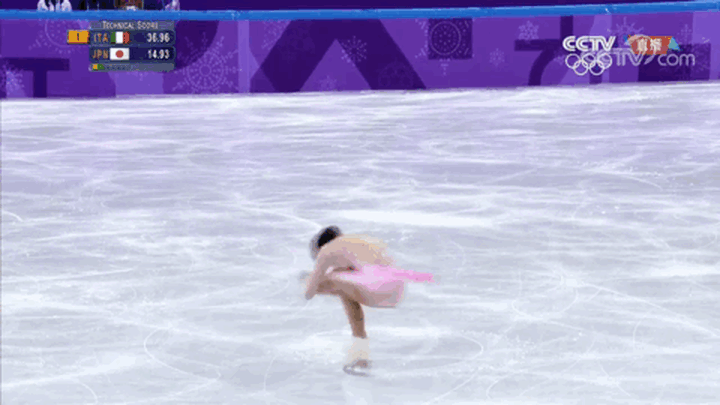
The camel spin is instantly recognizable. This is when the skater creates a horizontal line using their leg and upper body, which runs parallel to the ice.
燕式旋转很容易辨认。滑冰者的一条腿和上半身连成一条水平线,与冰平行。
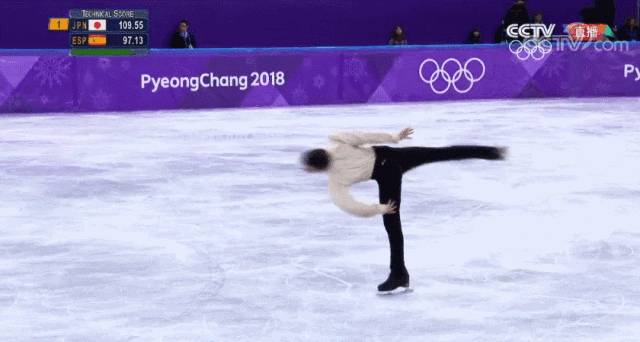
An upright spin is defined as any rotation which is performed on one leg when the skater is in an upright position.
直立旋转是指当滑冰者处于直立姿势时,用一条腿进行的任何旋转。

非基本姿势由这三种基本姿势演变而来,有数百种之多,赛场上常见的非基本旋转姿势包括贝尔曼、甜甜圈、躬身旋转等动作:
躬身旋转 layback spin

甜甜圈旋转 donut spin
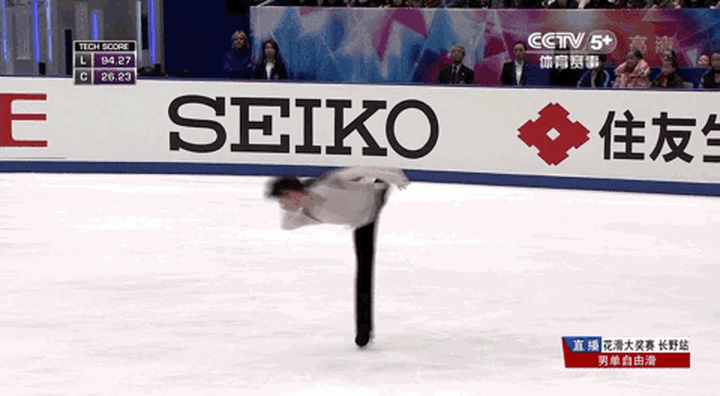
贝尔曼 Biellman spin
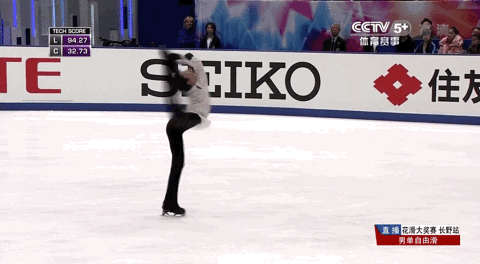
来源:Olympics.com,Scientific American
编辑:董静

















 英语点津微信
英语点津微信 双语小程序
双语小程序